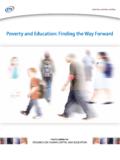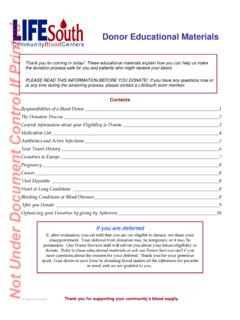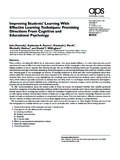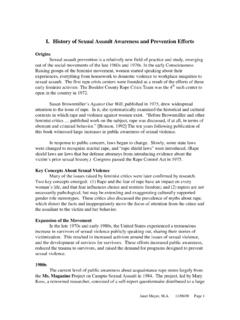Transcription of Child Friendly Spaces Guidelines for Field Testing - …
1 PRINCIPLES FOR Child Friendly Spaces IN EMERGENCIES 1 Guidelines FOR Child Friendly Spaces IN EMERGENCIES Bala Cristian, Roumania Unicef, Madagascar Field Testing version developed and reviewed by: January 2011 PRINCIPLES FOR Child Friendly Spaces IN EMERGENCIES 2 INTRODUCTION Child Friendly Spaces (CFSs) are widely used in emergencies as a first response to children s needs and an entry point for working with affected communities. Because CFSs can be established quickly and respond to children s rights to protection, psychosocial well being, and non formal education, CFSs are typically used as temporary supports that contribute to the care and protection of children in emergencies.
2 However, they are used also as transitional structures that serve as a bridge to early recovery and long term supports for vulnerable children. Although different agencies call CFSs different things safe Spaces , Child centered Spaces , Child protection centers or emergency Spaces for children the interventions are all part of a common family of supports for children and young For purposes of convenience, this paper refers to these related interventions as Child Friendly Spaces . Broadly, the purpose of CFSs is to support the resilience and well being of children and young people through community organized, structured activities conducted in a safe, Child Friendly , and stimulating environment.
3 The primary participants in and beneficiaries of CFSs are children (people under 18 years of age), although in some contexts, CFSs may also engage and benefit young people who are beyond 18 years of age. The specific objectives are to: (1) mobilize communities around the protection and well being of all children, including highly vulnerable children; (2) provide opportunities for children to play, acquire contextually relevant skills, and receive social support; and (3) offer inter sectoral support for all children in the realization of their rights. Depending on the context, CFSs are also used for a variety of other purposes such as laying a foundation for restarting formal education and supporting national education systems, enabling wider work on issues such as Child protection and early Child development, stimulating efforts on disaster preparedness and disaster risk reduction.
4 Some of these activities extend beyond the emergency context into the early recovery period or even into longer term development. The purpose of these principles is to give practical guidance to the Field teams that establish CFSs in different types of emergencies and contexts. They are also intended to guide advocacy efforts and donor practices in emergency settings where protection and well being ought to be high priorities. The process of building consensus among different stakeholders is as important as the product (the Guidelines themselves). The development of the Guidelines has helped to build consensus across three different communities of practice: the IASC Reference Group on Mental Health and Psychosocial Support in Emergency Settings, the global Child Protection Working Group, and the global Education Cluster.
5 As CFSs address the educational, protection, and psychosocial needs of children, it is essential that these three sectors have a common approach and collaborate on CFSs in the emergency settings. In using the Guidelines , it is essential to take an approach that is contextual and culturally appropriate. These Guidelines define a framework for action but are not a recipe of identical steps to be applied in every context. For example, armed conflicts and natural disasters present different challenges, making it important to adapt CFSs to each kind of emergency. Similarly, emergencies differ significantly in regard to how strongly children have been affected and the levels of resources that are available for support.
6 In addition, the Guidelines recognize that quality CFSs are not established overnight but evolve during emergencies through continued reassessment and adjustment that enrich and strengthen the supports 1 In some situations, Temporary Learning Centers may perform the same Child protection, psychosocial, and emergency education functions as CFSs. In such situations, Temporary Learning Centers may be categorized as part of Child Friendly Spaces . If Temporary Learning Spaces focus mostly on education, it is best to categorize them as educational supports rather than CFSs.
7 PRINCIPLES FOR Child Friendly Spaces IN EMERGENCIES 3 for children. Since the development of CFSs is an ongoing and evolving process, these Guidelines should be used on a continuing basis to enable CFSs to achieve their full potential. The Guidelines should also be implemented with sensitivity to Child development and the distinct needs of girls and boys. For example, the particular activities or the way in which activities are implemented might be very different for a 16 year old girl than for an eight year old boy. Skilled implementation requires the adaptation of CFS activities and modes of implementation to children and young people who have different competencies and needs.
8 For all age groups, careful attention should be given to meeting the distinctive needs of girls and enabling their full participation. The terminology of the Guidelines deserves comment. At present, there is no universally accepted management system for CFSs, or names for the various roles and positions involved in establishing and running CFSs. A common structure is to have a supervisor (international or national staff) with expertise in Child protection, emergency education, and/or psychosocial support who supervises several area managers who oversee multiple CFSs and also national staff who train and support the people who implement particular CFSs.
9 Usually, each CFS has a supervisor who oversees the CFS operations and the people who work in it, including the people (staff or community volunteers) who work specifically with children. In this document, the term CFS workers refers broadly to all the people who actively organize activities for children in the CFSs or visit CFSs regularly to support the people working there. The term animators refers specifically to people (staff or volunteers) who conduct activities with children on a regular basis, while the term activity specialists refers to people who come in occasionally to conduct a specific activity such as traditional dancing.
10 To have positive effects and avoid causing harm, CFSs should adhere to the UN Convention on the Rights of the Child , the IASC Guidelines on Mental Health and Psychosocial Support in Emergency Settings and the INEE Minimum Standards for Education: Preparedness, Response, Recovery, and they should follow the principles and actions outlined below, which are the product of extensive inter agency dialogue and learning from different emergencies. PRINCIPLES AND ACTIONS The following five principles are essential and should be built into all the actions outlined below: 1. Take a coordinated, inter agency, and multi sectoral approach 2.

















